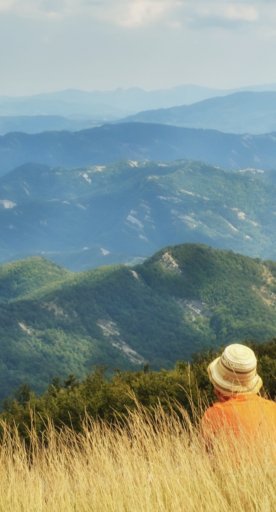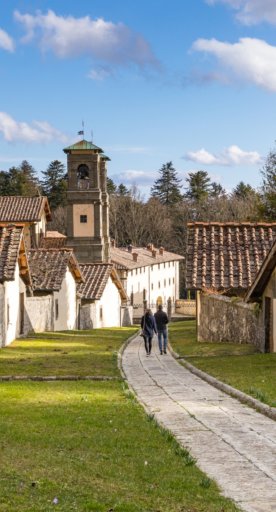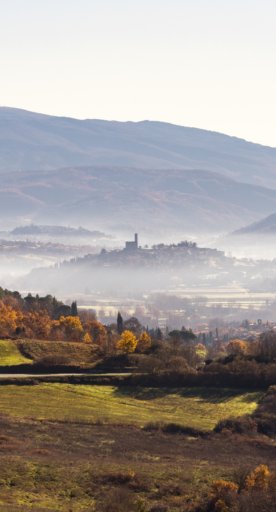Casentino Forests, Mount Falterona and Campigna National Park
A magical atmosphere at the foot of the Appenines
It is the greenest park in Italy, and in autumn it is tinged with a thousand colors, so much so that it is one of the best places to admire foliage, or the spectacle of leaves turning all shades of red, yellow and orange.
This is the National Park of the Casentino Forests, Mount Falterona and Campigna: one of the most pristine forest areas in Europe, a true oasis of nature and silence that straddles Tuscany and Emilia Romagna. Here live roe deer, deer, fallow deer, wild boar and even the wolf, which after a long absence has returned in recent years to successfully populate this corner of the Apennines.

The surface area of the Park extends over more than 38,000 hectares, from Mount Falterona to the north to Passo dei Mandrioli to the south and the landscape changes between slopes: gentle on the Tuscan side, steep and rugged on the Romagna side. These magnificent forests are home to hermitages and monasteries, such as La Verna and Camaldoli, chosen in ancient times as ideal places to cultivate spirituality and meditation, surrounded by nature and far from the pitfalls of the world.
The noble and historic forests have remained intact through the centuries thanks to the foresight of both monks and forest administrators: here are the ancient forests of the Grand Duchy of Tuscany, those that supplied valuable timber to arsenals in Livorno and Pisa and to the Opera del Duomo in Florence.


Wandering through the park you will find fairytale-like waterfalls, such as the Acquacheta, mentioned in Dante’s Divine Comedy, as well as incredible places such as the Castagno d’Andrea, a village amid marronete, the Italian word for centuries-old forests cultivated for chestnut production, that once was the basis for the mountain population’s diet.
Leaving from here, you can take an excursion to Mount Falterona, home to the sources of the Arno River and the Lake of the Idols, an ancient worship site for the Etruscans and the Casentino’s most important archaeological site.
Among the most beautiful sites to visit is the Ponte Lake, an artificial basin perfectly positioned in one of the most path-packed areas of the Park, along with the picturesque medieval town of San Benedetto in Alpe; the old mills in Fiumicello and Castel dell’Alpe, still operational; and Mount Penna, a magnificent panoramic overlook with a view toward the Lama forest and the valleys that slope downward toward Emilia Romagna. The view from the mountain peak is one of the most evocative in all of the Appenines with centuries-old forests as far as the eye can see, and, on particularly clear days, you might catch a glimpse of the Adriatic Coast.
The protected area can be visited via walking excursions, mountain bike, on horseback or, in wintertime, via ski touring along the more than 650 kilometers of nature path routes.
In 2017, the ancient beech forests of the Casentino Forests National Park became a UNESCO World Heritage Site.
The area designated for the National Park includes the Sasso Fratino Integral Reserve, the first Integral Reserve established in Italy in 1959 under the management of the Carabinieri Biodiversity Department in Pratovecchio, totaling about 7,724.28 hectares: this is the largest site among those designated in Italy and one of the largest ancient forest complexes in Europe.
The Parks, a listening journey: the Casentino Forests, Mount Falterona and Campigna National Park
Listen to the episode dedicated to the Casentino Forests, Mount Falterona and Campigna National Park.
"The Parks, a listening journey" is a podcast consisting of six episodes, created in accessible language to talk about curiosities, history, myths and legends and to provide information about the plant and animal life in six large protected areas in Tuscany. A journey for everyone.





